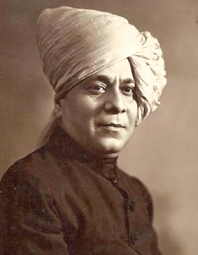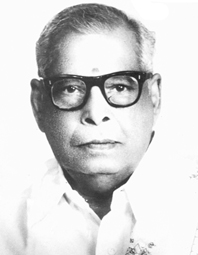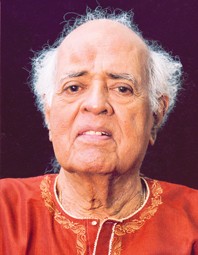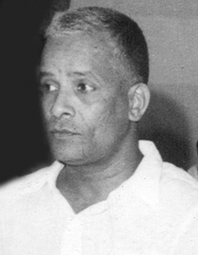COVER STORY - A southern seat of Hindustani music by GOWRI RAMNARAYAN

A sleepy town in north Karnataka, Dharwar flowered quite suddenly in the twentieth century into a prominent centre for Hindustani music, a departure from the 1880s when the region boasted Carnatic musicians of merely local fame.
The formation of the Bombay Presidency by the British meant the merger of a part of Karnataka, north of Tungabhadra, with Maharashtra. This sparked a dynamic interaction between people of different language groups, transforming the culture of Karwar, Belgaum, Bijapur and Dharwar. Somehow the local populace managed to remain detached from the agitations of the freedom movement, and therefore found the leisure to enjoy drama and music.
The advent of Marathi drama cultivated a taste for Hindustani music in the residents of North Karnataka. Great musicians like Sawai Gandharva, Mallikarjun Mansur and Basavaraj Rajguru belonging to the Dharwar region, did theatre in their youth. Gangubai Hangal’s interest in natya sangeet made her family decide to train her in Hindustani rather than in Carnatic music practised by her mother Ambabai and grandmother Kamalabai.
CENTENARY FEATURE - A true sangeetagna by NANDINI RAMANI

As I stand in front of the sanctum sanctorum of the Lord of the Universe, at the Brihadeeswara temple, Kittappa Pillai’s words “Neenga poyi Avarai paarthuttu vaanga” (Go have darsan of Him and come) ring in my ears. Those were probably the last words the great natyacharya uttered before he slipped into his final moments before joining his illustrious ancestors – the Tanjavur Quartet on the following day – 30 October 1999.
I was fortunate to have worked closely with him in the two-and-a-half years before his death, on a book of rare compositions in the Tanjavur repertoire of Bharatanatyam. It was a very emotional experience for me to have been present during the last few hours of Tanjavur K.P. Kittappa Pillai.
I had taken the final press copy to Tanjavur to show it to Kittappa Pillai, knowing fully well from my previous visits that his end was approaching. As I waited for his comments he looked deeply at me and told me in a feeble voice to go to the temple, place the copy of the book at the feet of Lord Brihadeeswara and bring it back with His blessings. I choked and tried to control my tears. I did as I was told. Coming back from the temple I extended the book to the ailing guru. Then came the most moving gesture from the illustrious sangeetagna; he placed his hand on my head, almost pulling it closer to him and blessed me saying, “Neenga nalla iruppeenga” (You will do well). I can never forget the parting look from the master even 13 years after of his departure from this world.
TRIBUTES - A cerebral musician by N. RAMANATHAN

In December 1968, during the annual conference of the Music Academy, Madras, M.R. Gautam, Reader and Head, Department of Vocal Music, Banaras Hindu University, delivered an illustrated talk on the subject of ‘Gharanas in Hindustani Music’. I was just about to complete an under-graduate course in Carnatic music and frantically looking for universities in the north that would offer a post-graduate course, as there were none in the south then. I timidly walked up to Gautam, standing outside the pandal (the Kasturi Srinivasan mini hall had not come up), and enquired if I could pursue higher studies at the Banaras Hindu University. “Not in Carnatic music, but you could take up a study of Masters in Musicology, at the Department of Musicology and for that, please write to the Head, Dr. Premlata Sharma, a very erudite and able scholar,” was his reply.
This personal anecdote has an impersonal allusion. At the Banaras Hindu University, I discovered that the Music Faculty had three departments – vocal, instrumental and musicology – each one headed by an eminent and distinguished academician. The three did not have cordial personal relations with one another. Thus for me, later, it was a surprise that Gautam never mixed his personal dislikes with academic relations and had spoken highly of Premlata Sharma and strongly recommended my pursuing higher studies there. This admirable quality I found present in all the other Heads too. They never involved the students in their own personal animosities.
CENTENARY FEATURE - THREE CENTENARIANS by V. RAMNARAYAN

Alathur Srinivasa Iyer
The centenaries of so many musical luminaries are being observed all around us, indication that many of the practitioners of the Ariyakudi concert format would have turned 100 over the last couple of years.
Celebrations were conducted worldwide in 2012 in memory of such great artists of the last millennium as Palghat Mani Iyer, Madurai Mani Iyer, T. Brinda, and T.K. Rangachari.
Mannargudi Sambasiva Bhagavatar, Alathur Srinivasa Iyer of the Alathur Brothers, Mayavaram Govindaraja Pillai and Alangudi Ramachandran were some of the other would-be century makers of last year.
Born on 21 January 1912 to Lakshmi Ammal and Angarai Sankara Srautigal at Ariyalur, Tiruchi, A.S. Srinivasan was to reach the pinnacle of the Sangita Kalanidhi in Carnatic music as Alathur Srinivasa Iyer in 1965, a year after his younger vocal partner Sivasubramania Iyer, his guru Alathur Venkatesa Iyer’s son. And thereby hangs a tale that we will come to later in this account.


